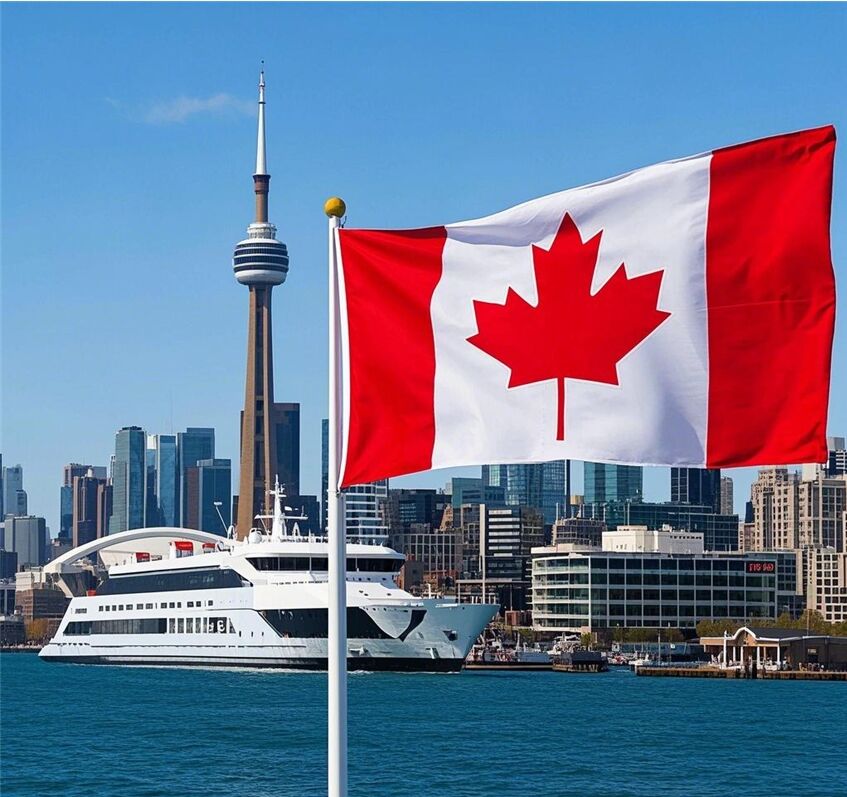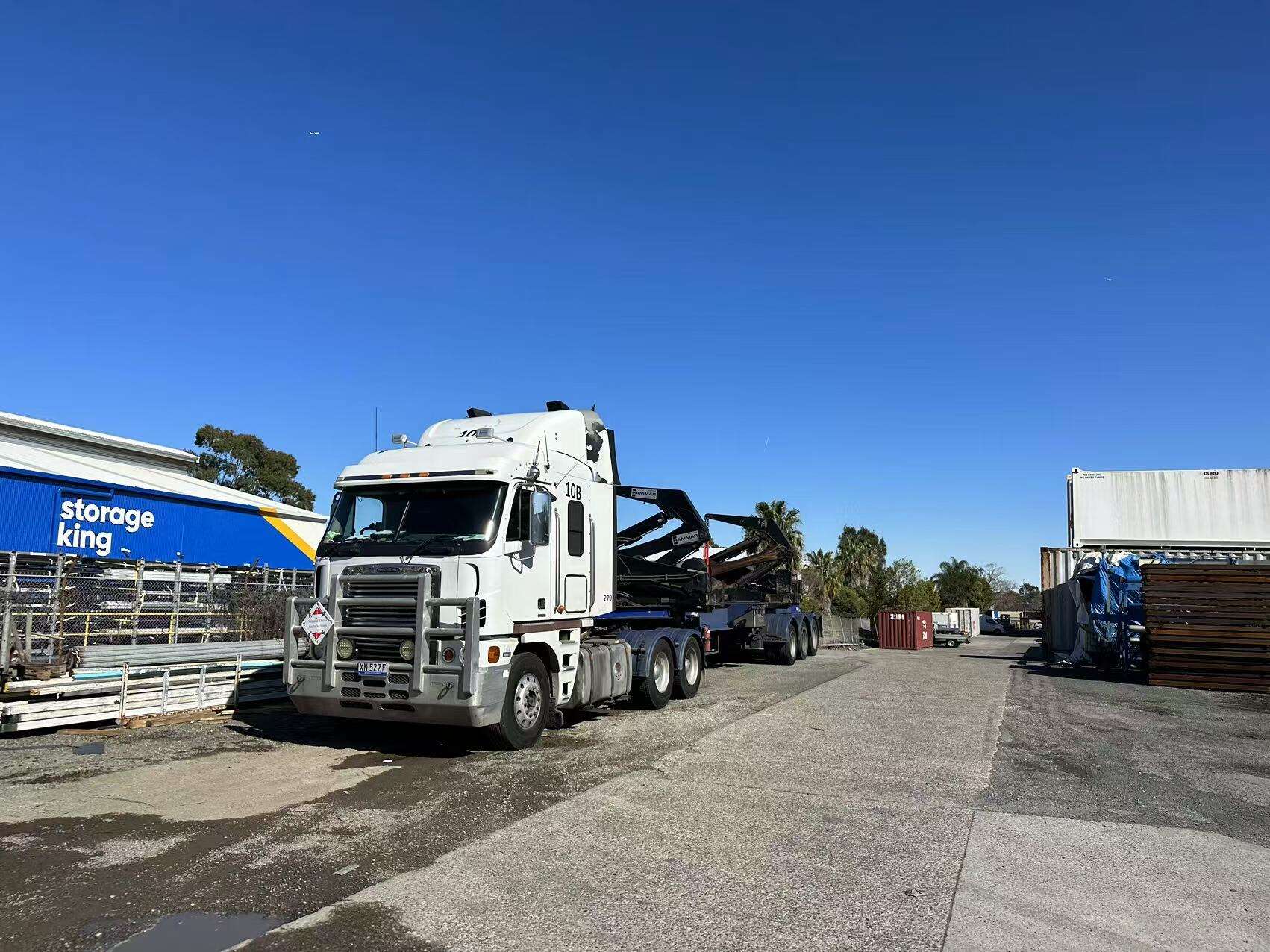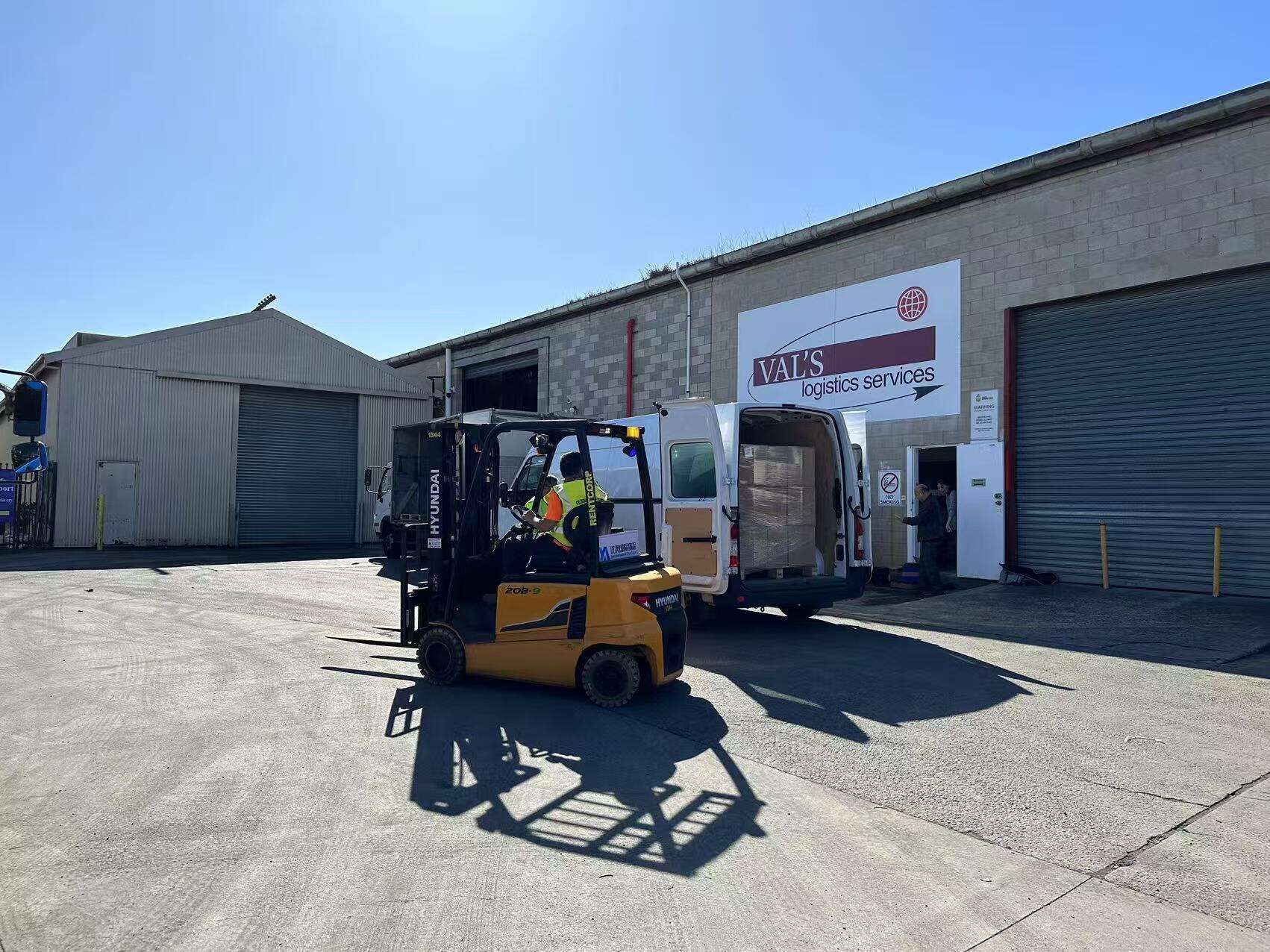Understanding Sea Freight from China to Indonesia
Key Ports and Shipping Routes
Sea freight between China and Indonesia is heavily reliant on several key ports. In China, major ports like the Port of Shanghai, Ningbo-Zhoushan Port, and Shenzhen Port are vital for shipping due to their advanced facilities and strategic locations. These ports serve as gateways offering significant global reach. On the other end, the Port of Tanjung Priok in Jakarta is Indonesia's busiest port, facilitating a large portion of maritime trade. Shipping routes often take cargo along the bustling South China Sea and the Strait of Malacca, two critical maritime paths that underscore the importance of logistics and maritime trade between these nations.
Historically, China and Indonesia have nurtured robust trade relationships, which have influenced current shipping patterns. The long-standing exchange of goods and services has paved the way for efficient and reliable maritime operations. This enduring relationship not only enhances logistical efficiencies but also ensures a stable flow of goods, thus reinforcing sea freight's role in international trade dynamics between these two economic powerhouses.
Factors Affecting Sea Freight Costs and Transit Time
Several factors influence the costs and transit times for sea freight between China and Indonesia. The costs are significantly affected by fuel prices, shipping demand, and the availability of containers. A rise in fuel costs could lead to increased freight rates, while high shipping demand might result in premium pricing due to limited container availability. Conversely, during periods of low demand or an abundance of containers, costs typically decline.
Seasonal patterns and weather conditions also play a crucial role in determining transit times. For instance, during monsoon seasons or due to unpredictable weather, shipping might incur delays, impacting just-in-time delivery schedules. Additionally, geopolitical factors and trade policies between the two countries can influence freight rates. Any shifts in trade agreements or diplomatic tensions might alter tariffs and regulations, leading to fluctuating shipping costs and times, emphasizing the importance of staying informed about these variables in the logistics sector.
LCL vs FCL: Choosing the Right Container Option
When deciding between the least container load (LCL) and full container load (FCL) options, businesses must weigh their specific shipping needs and volumes. LCL is suited for smaller shipments where goods share container space with others, offering cost efficiency but with potentially longer transit times due to the need for container consolidation. This option is particularly advantageous for startups or small businesses with limited cargo.
Conversely, FCL dedicates an entire container to one shipper's goods, ensuring quicker delivery due to fewer stops and handling along the shipping route. This option is more suitable for larger enterprises or for higher-volume shipments. While FCL tends to have higher upfront costs, it offers greater security and efficiency, ensuring that high-priority shipments reach their destination on time. Understanding these differences can aid businesses in optimizing their logistics strategies, aligning shipping methods with their operational needs and budget constraints.
Comparing Sea Freight and Air Freight Options
Cost-Benefit Analysis of Ocean Freight vs Air Freight
When it comes to comparing ocean freight and air freight, both cost and time are key factors that businesses must consider. Generally, ocean freight tends to have a lower cost structure compared to air freight. According to Freightos, air freight is typically utilized for high-value or time-sensitive shipments, such as electronics and pharmaceuticals, due to its faster delivery times, often taking just a few days or even hours. On the contrary, ocean freight is a more cost-effective option, particularly for transporting bulk or heavy shipments where delivery time is not the primary concern. For instance, shipping a 40-foot container from Shanghai to New York tends to hover around $13,987, according to maritime and shipping consultancy Drewry.
Companies often opt for air freight over ocean freight when they need expedited delivery to meet tight schedules or fulfill urgent orders. For example, during periods of heightened demand, such as the holiday season or amid supply chain disruptions like the COVID-19 pandemic, businesses may shift from sea to air freight to meet delivery timelines. However, this expedited service comes at a pricier tag, making ocean freight a more favorable option for businesses looking to optimize their shipping budgets without the urgency of delivery times.
When to Choose DHL International Shipping for Urgent Deliveries
DHL international shipping is a widely recognized choice for businesses needing quick and reliable delivery of urgent shipments across borders. DHL offers expedited shipping services designed specifically to accommodate fast and secure transportation needs. Utilizing a dedicated shipping service like DHL ensures that time-sensitive deliveries are prioritized. One notable example is their Express Worldwide service, which offers door-to-door delivery against the clock, suitable for critical shipments. Many businesses have shared remarkable experiences where DHL's timely service prevented significant financial losses and maintained smooth supply chain operations. These success stories underscore the brand's reliability in delivering urgent goods securely and punctually, making it a trusted partner for companies facing tight deadlines.
Environmental Impact of Different Freight Methods
Assessing the environmental impact of sea freight versus air freight highlights significant differences in their carbon footprints. According to research data, air freight has a significantly larger carbon footprint compared to sea freight due to higher fuel consumption. For instance, air freight can generate up to 50 times more carbon emissions per ton-mile than ocean freight. This discrepancy has led to increasing regulatory pressures on the shipping and freight forwarding sectors to implement sustainable initiatives. Many are focusing on adopting more energy-efficient technologies and promoting freight options such as DHL International Shipping, which is known for its sustainability efforts, including carbon offset programs and eco-friendly practices. As consumer demand for greener shipping solutions rises along with regulatory pressures, it has become crucial for businesses to incorporate sustainability initiatives into their freight shipping choices, thereby contributing to environmental responsibility while meeting rising regulatory mandates and consumer expectations for sustainable business practices.
Freight Forwarding Services for China-Indonesia Trade
Role of International Freight Forwarding Services
Freight forwarding services play a crucial role in the logistics of international trade, especially in facilitating the smooth movement of goods across borders. These services involve a range of activities such as logistics management, route optimization, and navigating complex documentation processes, all of which are essential for ensuring timely and efficient delivery of goods. Freight forwarders act as intermediaries, orchestrating transportation across different modes like sea freight and air freight. Their role becomes particularly important in the complex web of international trade, where regulations, languages, and logistics vary considerably by country. According to the Asian Development Bank (ADB), the Asia-Pacific region has witnessed a significant increase in freight demand, underscoring the growing need for expert freight forwarding services. As global commerce continues to burgeon, renowned providers such as DHL focus on offering comprehensive international freight forwarding services to streamline supply chains and ensure seamless cross-border transactions, contributing significantly to the global trade landscape.
How to Select a Reliable Freight Partner
Choosing a reliable freight forwarding partner is crucial for seamless logistics operations between China and Indonesia. When evaluating potential partners, it is important to consider several critical criteria. First, experience in handling international freight forwarding services is invaluable because it ensures familiarity with complex documentation and logistics management. Second, assess the service quality of prospective partners, as exceptional service is a cornerstone of successful collaborations. You should seek referrals and network with trusted industry colleagues to gain insight into reliable partners.
Moreover, recommendations from trusted associates who have successful trade histories can provide reassurance and guidance. Lastly, meticulous research and comparison of the offerings from top freight forwarding firms, like Maersk and Evergreen Line, can help identify a partner best suited for your specific needs in the China-Indonesia trade lane. Each company has its strengths and specializations, making it important to choose one whose expertise aligns with your shipping requirements. As an example, companies such as DHL International have established themselves as dependable partners by providing tailor-made solutions for various trade lanes, including China-Indonesia.
Customs Brokerage and Documentation Support
Understanding the role of customs brokers and the importance of documentation is crucial for successful international shipping. Customs brokerage plays a fundamental role in ensuring that shipments comply with international trade regulations, coordinating logistics and route optimization to facilitate smooth process transitions across borders. Freight forwarding services are pivotal for businesses involved in international trade, especially in areas like the Asia-Pacific region, where trade complexity is heightened due to differing regulatory standards and logistics networks across countries.
The Asia-Pacific region has seen substantial growth in freight forwarding services, driven by the booming trade between nations like China and Indonesia. According to the World Bank, the Asia-Pacific is positioned to account for nearly half of global trade growth in the next decade, underscoring the critical role that experienced freight forwarders play in enabling seamless and efficient trade dynamics in this region.
Accurate documentation is crucial for customs clearance and avoiding logistics delays and penalties. Essential documents for sea freight shipments from China to Indonesia include the Bill of Lading, commercial invoice, packing list, and export/import licenses. Inaccuracies or omissions in these documents can lead to significant delays or fines. For example, misclassification of goods on the commercial invoice can result in miscalculated duties, causing unnecessary costs. Therefore, partnering with knowledgeable customs brokers is essential for avoiding such obstacles while ensuring compliance with international trade regulations. These professionals are experts in navigation compliance requirements and will help prevent common mistakes such as incorrect tariff classifications or missing paperwork.Schedule timely documentation reviews and maintain an updated checklist to stay ahead of common documentation challenges.
Customs Clearance and Regulatory Compliance
Essential Documents for Sea Freight Shipments
In shipping, the efficiency of sea freight relies heavily on precise documentation. Essential documents like the bill of lading, commercial invoice, and packing list form the backbone of any successful shipment. The bill of lading serves as a receipt from the carrier acknowledging the shipment details, while the commercial invoice outlines the goods' value and particulars. The packing list provides detailed information on the cargo's packaging, aiding both carriers and customs officials in identifying the shipment contents. Accurate documentation is paramount to regulatory compliance, as inaccuracies can lead to costly delays. Industry reports indicate that missing or incorrect information can extend shipment clearance by days, highlighting the critical nature of thorough paperwork.
Indonesian Import Regulations and Restrictions
Navigating Indonesia's import regulations requires thorough understanding due to the specificity and complexity of its legal framework. International shippers must adhere to regulations such as the requirement of Indonesian language labeling and compliance with the National Industrial Policy (NIP) for goods like textiles and electronics. Government reports emphasize the need for compliance with import licensing regulations to ensure seamless entry. Non-compliance not only escalates freight costs but also results in shipment delays, sometimes as lengthy as several months. Therefore, comprehensive research and adherence to these regulations are indispensable for any business planning shipments to Indonesia.
Handling Duty Calculations and Tax Obligations
Duty and tax obligations are critical elements in managing the import process, directly affecting the overall cost of freight shipping. Basic duty calculations generally depend on the product classification under the Harmonized System (HS) Code and its declared value. For instance, electronic goods imported from China to Indonesia might attract varied tax rates depending on their classification and value. Reliable sources like the Indonesian Customs and Excise can provide up-to-date duty and tax data, reflecting the current economic landscape. Understanding these principles and using resources wisely can help businesses accurately forecast costs and comply with Indonesia’s fiscal requirements for imports.
Optimizing Sea Freight Costs and Efficiency
Strategies for Reducing International Shipping Expenses
Reducing international shipping expenses demands a blend of strategic foresight and actionable tactics. The first strategy involves route optimization and volume consolidation, where optimizing pathways and combining shipments can lead to significant cost reductions. Establishing long-term relationships with shipping providers can also be a cost-saving measure as it often allows for negotiation of better rates and priority services. According to shipping analysts, businesses see an average savings of 10% to 15% when adopting these tactics consistently. Engaging in such strategies not only streamlines logistics but also enhances the efficiency and reliability of deliveries.
Consolidation Services for Small Businesses
Consolidation services present a pivotal opportunity for small businesses to mitigate shipping costs. By pooling smaller shipments into a consolidated load, businesses can share space and expenses with others, making shipments more economical. A notable example is a small e-commerce company that utilized consolidation services to reduce shipping costs by 20%. This approach ensures that even smaller players can benefit from the cost advantages typically reserved for larger businesses. Furthermore, consolidation services enhance logistics for small enterprises, ensuring they remain competitive in a global market dominated by larger corporations.
Case Study: Successful China-Indonesia Supply Chain Management
A compelling case study within the China-Indonesia corridor underscores the efficacy of robust supply chain management. This particular example involved a company that implemented strategic inventory management and route optimization, resulting in a 30% reduction in transit times and a noticeable 25% drop in overall logistics costs. Key takeaways from this success include the importance of leveraging technological tools for smarter route planning and real-time monitoring. For businesses looking to replicate such success, it is crucial to adopt a comprehensive approach to supply chain practices, ensuring resilience and adaptability in their logistics operations.
Table of Contents
- Understanding Sea Freight from China to Indonesia
- Comparing Sea Freight and Air Freight Options
- Freight Forwarding Services for China-Indonesia Trade
- How to Select a Reliable Freight Partner
- Customs Brokerage and Documentation Support
- Customs Clearance and Regulatory Compliance
- Optimizing Sea Freight Costs and Efficiency




